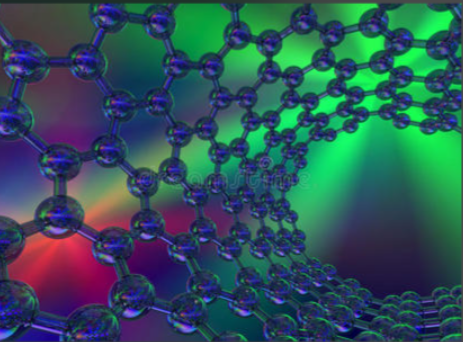CNTs in High-Energy Laser Systems
High-energy laser (HEL) systems are emerging as transformative technologies in defense, aerospace, industrial processing, and scientific research. Applications range from directed-energy weapons and satellite communications to precision cutting, welding, and medical surgery. These systems demand materials that can withstand extreme thermal, optical, and mechanical stresses, while maintaining performance stability.

Carbon nanotubes (CNTs), with their extraordinary electrical conductivity, high thermal stability, strong nonlinear optical properties, and remarkable mechanical resilience, are now being studied as key enablers for next-generation laser technologies. From optical limiters and saturable absorbers to thermal management and composite reinforcement, CNTs bring multiple advantages to HEL systems.
Why CNTs for High-Energy Lasers?
-
Nonlinear Optical Properties
-
CNTs exhibit strong saturable absorption and optical limiting behavior, making them ideal for laser mode-locking and pulse shaping.
-
They can protect sensitive optical components from intense light pulses.
-
-
Thermal Conductivity
-
CNTs can dissipate heat rapidly (thermal conductivity > 3000 W/m·K), reducing hot spots in laser cavities.
-
-
Mechanical Strength
-
CNT composites provide lightweight yet robust structural reinforcements for laser housings and optical mounts.
-
-
Electrical Conductivity
-
Their exceptional conductivity supports electro-optical control devices and high-speed laser modulation.
-
-
Scalability and Integration
-
CNT thin films and composites can be incorporated into optical fibers, solid-state lasers, and free-space systems.
-
Key Applications of CNTs in High-Energy Lasers
1. CNT-Based Saturable Absorbers
-
CNTs are widely used in mode-locking ultrafast lasers, enabling the generation of femtosecond to picosecond pulses.
-
Compared to traditional materials (e.g., semiconductor saturable absorber mirrors, SESAMs), CNTs offer:
-
Broadband absorption (from visible to near-infrared).
-
Fast recovery times (<1 ps).
-
Robustness against optical damage.
-
-
Applications include telecommunications, micromachining, and medical imaging (OCT).
2. Optical Limiting and Protection
-
CNTs can act as optical limiters, absorbing or scattering high-intensity laser beams.
-
Protects detectors, sensors, and human eyes from accidental laser exposure.
-
Particularly relevant for military HEL systems.
3. Thermal Management Materials
-
High-power lasers generate localized heating that degrades optical elements.
-
CNT composites are used in heat spreaders, thermal interface materials (TIMs), and cooling substrates.
-
This ensures stable beam quality under prolonged operation.
4. CNT-Reinforced Optical Composites
-
CNTs enhance strength and durability of polymer and ceramic composites used in laser windows, lenses, and protective coatings.
-
Improved damage thresholds against laser-induced breakdown.
5. CNT-Coated Optical Fibers
-
CNT coatings improve the damage resistance and nonlinear control of optical fibers in fiber laser systems.
-
Used for high-power transmission and pulse compression.
6. CNTs in Laser Energy Storage and Modulation
-
CNT films in capacitors and electrodes help deliver fast discharge energy for pulsed HEL systems.
-
CNT-based devices enable high-speed modulation of laser beams.
Case Studies and Research Highlights
-
Ultrafast CNT Mode-Locked Lasers
-
Researchers demonstrated CNT-based saturable absorbers achieving sub-200 fs pulses in fiber lasers.
-
Outperformed SESAMs in wavelength flexibility and damage resistance.
-
-
CNT-Polymer Optical Limiters
-
CNT composites in transparent polymers successfully blocked gigawatt-level laser pulses, proving their use for eye and sensor protection.
-
-
CNT Thermal Spreaders in HEL Systems
-
Defense labs tested CNT-based TIMs that reduced laser diode heating by >30%, extending operational lifetime.
-
-
CNT-Reinforced Ceramics for Laser Windows
-
CNT-alumina composites exhibited 50% higher fracture toughness while maintaining optical transparency.
-
Advantages Over Conventional Materials
| Function | Traditional Materials | CNTs in Laser Systems |
|---|---|---|
| Saturable Absorber | SESAM (narrow band, fragile) | CNTs (broadband, robust, ultrafast) |
| Optical Limiting | Nonlinear crystals | CNT composites (wideband, scalable) |
| Thermal Management | Copper, diamond | CNT composites (lightweight, flexible) |
| Laser Windows & Coatings | Pure ceramics/glass | CNT-reinforced ceramics (tougher, durable) |
| Fiber Coatings | Polymer or silica | CNT films (nonlinear, damage-resistant) |
Challenges and Limitations
-
Uniformity in CNT Films
-
Controlling alignment and dispersion remains a challenge for large-scale devices.
-
-
Long-Term Stability
-
Prolonged laser exposure may lead to CNT degradation; protective coatings are needed.
-
-
Integration with Existing Systems
-
Adapting CNT-based components to legacy HEL systems requires standardization and reliability testing.
-
-
Cost and Scalability
-
High-purity, defect-free CNTs are still expensive, though costs are gradually decreasing.
-
Future Outlook
-
Hybrid Nanomaterials: Combining CNTs with graphene, MXenes, or quantum dots for multifunctional optical devices.
-
Military HEL Deployment: CNT-based absorbers and limiters in shipborne and airborne laser weapons.
-
Miniaturized Medical Lasers: CNT absorbers enabling portable surgical and imaging lasers.
-
Space Applications: CNT composites in lightweight optics and thermal management for satellite laser communication.
With their unique combination of optical, thermal, and mechanical properties, CNTs are positioned to become critical building blocks in the future of high-energy laser systems.
Carbon nanotubes (CNTs) are redefining the performance boundaries of high-energy laser systems. Their roles as saturable absorbers, optical limiters, thermal conductors, and reinforcement materials make them versatile solutions for both civilian and defense applications.
As advances in material processing, stability, and integration continue, CNTs will help drive a new generation of more powerful, compact, and efficient high-energy laser technologies.

